YO-ZURI
“Sending Good “Vibes” To Lure In Mid-Winter Northern Pike and Walleyes”- by Mark Maule
As the ice thickens, snow accumulates on top of it, and fish have seen just about every bait imaginable offered by ice anglers in northern states, catching walleyes and northern pike can become a bit more of a task in mid-winter than at first ice. By the middle of January through early February fish have become more lethargic, and in many cases are reluctant to chase down bait than they were earlier in the year. However, this is no reason to put away your noisemakers that have worked throughout the open water and early winter ice fishing season! The 3DB Vibe can be a great lure which creates a disturbance in the water that can be used in more way than one catch walleyes and northern pike in mid-winter.
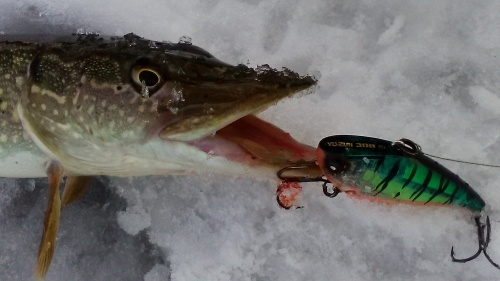
The Yo-Zuri 3DB Prism Fire Tiger Vibe is probably my most versatile lure that I use on lakes where perch is the forage species for northern pike and walleyes. Like in open water, it can be used effectively throughout the ice season to catch fish. The first way that I employ the 3DB Vibe is to rip it through the water column, making as much noise as possible and trying to get a reaction strike. This approach with the Vibe through the ice is great in mid-winter wherever the first big drop-off is in the lake. Usually, I look for quick transitions from 12 feet down to 18 feet or more and set up right in the middle of the transition. In this scenario, the goal is to catch fish that are moving up breaks and transitions before they get to the flats at dusk to feed on forage species.
While rapidly ripping, jigging, and swimming the 3DB Vibe can be a great way to catch some northern pike and walleyes in mid-winter that are cruising drop-offs, there are time when I simply use it as a decoy to draw fish in from a long way off. Even the most finicky of fish can be drawn into the area to investigate all of the commotion caused by the 3DB Vibe. When fish approach while pulling the Vibe through the water, but will not strike it directly in mid-winter, I employ a second Yo-Zuri product, the Snap Bean tipped with a fathead minnow only a few feet away under a slip bobber at the same depth that I am jigging the 3DB Vibe. What happens is that northern pike and walleyes will come cruising right up to the Yo-Zuri 3DB Vibe to investigate, see the Snap Bean setup, and will leave the Vibe to catch the easier smaller meal with the Snap Bean and minnow. In this case, the Vibe is used just to get the fish’s attention, and the Snap Bean tipped with a minnow is what seals the deal. In this scenario, I move to the top of the flats in 8-11 feet of water as the focus is less on reaction and more on catering to feeding fish after dusk.
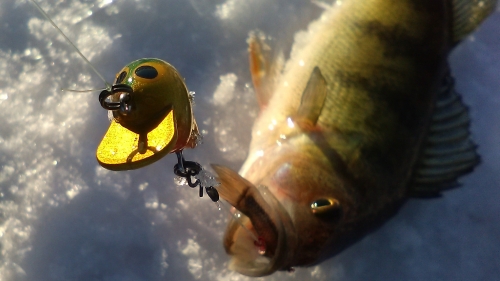
Whether you are using the Yo-Zuri 3DB Vibe to get fish to bite it directly, or you are using it as a decoy to draw in finicky fish from a distance so that they bite a Yo-Zuri Snap Bean tipped with a fathead minnow, the Yo-Zuri 3DB Vibe is a top-notch choice that can keep catching fish for you throughout the mid-winter ice season.
A Knotted Up Mess!!! (pt. 2)
Previously we talked about different knots to tie in freshwater applications, but now let’s dive into another simpler topic. From the time I move to Florida and started getting more experienced into saltwater fishing I quickly learned that saltwater anglers stick to the basics; this includes the knots they tie. Now just like freshwater anglers, everyone has their preferences but from what I have experienced is anglers stick to the knots: loop knot and Uni-Knot for tying to their favorite Yo-Zuri lure, Uni-to-Uni Knot for adjoining main lines to leaders, and then there is the art of crimping.
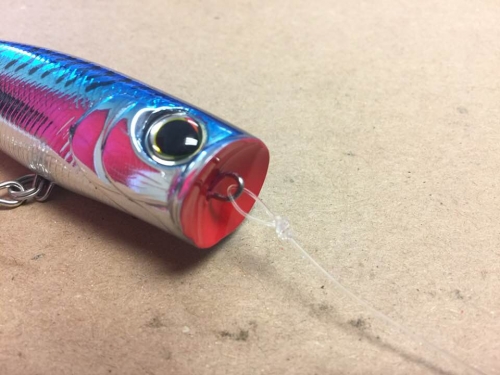
The basic loop knot is probably used the most in saltwater fishing because it is simple to tie with heavier fluorocarbon or monofilament leaders. Tying a loop knot also gives the bait the ability to move more freely in the water, which will create more action. As you can see in the photo, the actual knot is away from the lure, not at the actual line tie.
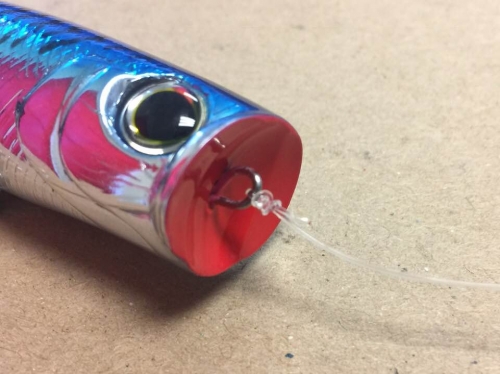
The Uni-Knot is also a favorite among saltwater anglers for the same attributes as the loop knot; it is easy to tie, works well with larger pound test line, however does not give the bait an extra moving ability. The Uni-Knot is tied directly to the lure line tie and is common to tie for the baits that just swim through the water column and resemble a bait fish.

One popular fishing technique that is shared among both freshwater and saltwater anglers, using a braided mainline to a leader material. Commonly anglers use a Uni-to-Uni knot for this application. Typically an angler will wrap the leader material four or five times around the braided mainline to form one Uni-Knot, then wrap the braid around the leader material ten to fifteen times to form the second Uni-Knot before tying them tight together. This knot is relatively small and will easily go through your rod guides when casting. The friction on the two knots is pulling against one another so the Uni-to-Uni Knot will hold up well.
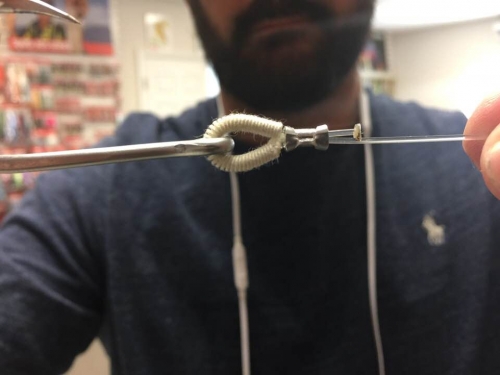
Finally, another form of knot tying that requires tool is not really a knot: crimping!!! Crimping is something a lot of saltwater anglers will use for tying on lures with heavy and large test line. Commonly anglers will implement a crimping technique when using 80lb test or larger; something for fishing to beat world records!!! Crimping tools required are: Crimpers, a Crimp, Chaff Tubing, and of course your favorite Yo-Zuri lure or one hook for live bait fishing. To perform this properly you will want to: feed the mainline through the crimp and chaff tubing, go around the eye of the lure, and feed through the crimp again. It is suggested that pull all the components as far down as you can but still leave a little room in case the mainline does slip a little. This is very common anglers that are using live bait with larger leaders and trolling bait (Yo-Zuri Bonita and Mag Speed Vibe are common examples).
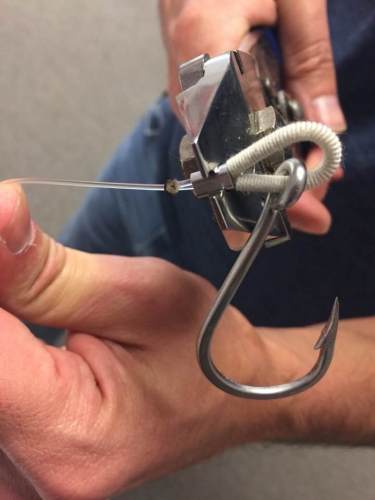
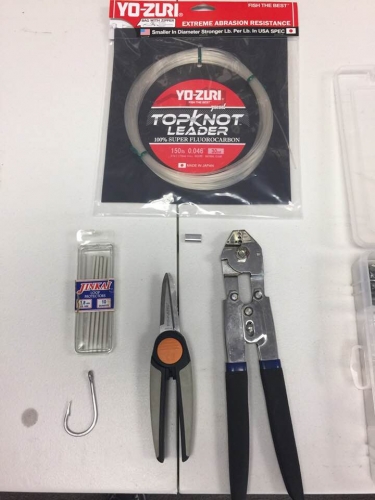
A Knotted Up Mess!!! (pt.1) –by Theron Asbery
Here is an on-going topic for debate in fishing; what knot to tie and when?
The number of knots out there to use and why they are better than the rest, is about as spread out as the number of different hardbaits on the market. For some anglers, they are very particular and picky about their knots. Some use a knot their grandpa taught them how to tie, and grandpa knew everything. Some use a particular knot that they used to win a tournament. Others use a certain knot because it has never broken on them. Finally, there is the anglers that tie any knot that the spirit moves them to tie; whatever the case may be, there is a lot of options.
I’ve spent ten years as a competitive bass angler, five of which have been competing on the FLW Tour. Here is my approach to the different knots out there and when to use them. The first piece of advice I can give every angler out there, keep it simple! I stick to three basic knots in my fishing arsenal and I have yet to find a reason to change. I’ve also added some value from Yo-Zuri prostaff members to help increase the incentive behind the way I like to do things.
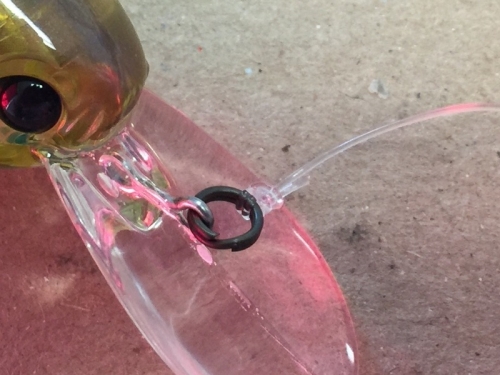
The first knot is the Palomar knot, probably one of the easiest but also one a lot of anglers have controversy over. Growing up in Oklahoma and fishing a lot with my dad, the Palomar knot was the first knot I learned to tie. However, I did break off a lot, but it was the only one I knew how to tie. It was not until I started competing in tournaments and reading a lot of article in magazines did I start learning how to tie different variations. The Palomar is still a knot I depend significantly on when fishing with Yo-Zuri Superbraid.
“The Palomar knot is as old as my fishing career. In Florida we fish a lot of grass, and I think the Palomar knot favors the best. Although it has a tendency to cut itself when tied with fluorocarbon, I think it holds the best strength with braid. Also it’s a smaller knot which cuts down the tendency on your bait getting hung up on debris in the water.” –Mike Surman, FLW Tour pro & Yo-Zuri prostaff member
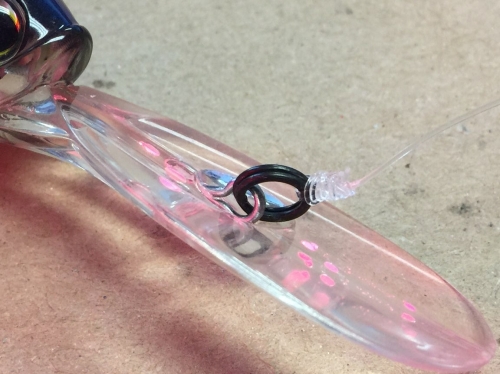
The knot I rely on 90% of the time is the San Diego Jam knot, or as some like to call it “the Jam knot”. This is the knot I especially tie when throwing Yo-Zuri crankbaits such as the 3DB Deep Crank or 3DR Mid Crank because both are worked especially well when in contact with wood or rocky bottoms. The amount of abuse you put your knot and line through in this scenario is endless, so a quality line and knot is paramount. Yo-Zuri TopKnot fluorocarbon is the best on the market and I’ve found the best knot to tie to hold up well and be the strongest is the San Diego Jam. It has three tag ends and pretty simple to tie, however the key to tying it correctly is like most any other knot, make sure to wet it down before you cinch it complete.
“Most of the anglers I know are tying the San Diego Jam for everything. I’ve never had that knot slip or break on me. In my line of work if it isn’t broke, then don’t fix it.” –Clent Davis, Yo-Zuri prostaff
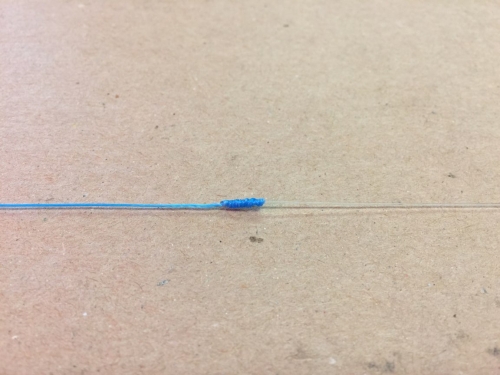
Finally, there is the knot everyone has to use to connect a mainline to a leader. Personally I like the Alberto knot. Again, this was the first knot I learned to tie when adjoining two different lines and it has not failed me yet. It is a pretty thin knot and holds up well for smaller diameter braid and fluorocarbon. It is a knot that wraps the mainline up to sixteen times around the leader material, so it has an excellent hold when all cinched down.
“I’ve found the quickest and strongest conjoining knot to tie, especially when finesse fishing, is the Alberto knot. I’ve caught ten pounders on shakey heads before, and never once had a single issue with the Alberto knot.” –Luke Clausen, Yo-Zuri prostaff & Major League Fishing BPT pro
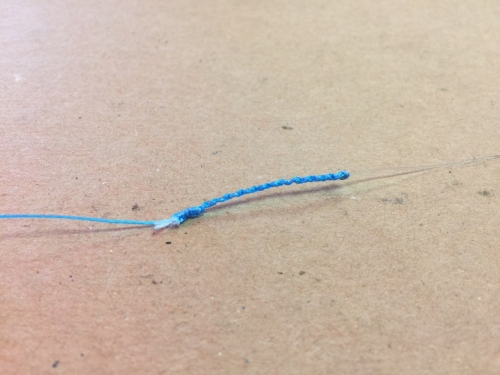
However, there is a new knot that has really shown itself and made a name for itself among anglers on the tour level; the FG knot. This is knot is relatively difficult to tie and will take a lot of practice to getting the hang of. It was originally designed by tarpon and redfish anglers in the state of Florida but has eventually made its way to the freshwater scene. Again, this is a very thin knot and has a great strength. I would recommend searching YouTube and seeing some different videos on how to tie it. It works very similar to a Chinese Finger Trap, I’ve even heard of guys using it for Crappie fishing and not having to retie for months and months at a time.
“The FG Knot is my favorite when tying braid to fluorocarbon. Although I recommend taking your time and sitting down in the bottom of the boat to tie it, I’ve exclusively started depending on it.”- Brandon Cobb, Yo-Zuri prostaff and BASS Elites Series Angler
Here is just a couple examples of the different knots out there anglers love to use. I have my personal favorites, and every angler out there has their own. No matter what an angler prefers to tie, the key is to have confidence in the knot you rely on!!!
Next week we will feature pt.2 which will cover knots preferred in saltwater fishing. Think it is the same as freshwater???
Staying warm and anticipating the upcoming Tournament Season!!!
Thanksgiving Dinner around my house is always a very busy time of year. The food, the family, football, hunting season, decorating, and then there is the day-to-day chores to keep up with. This is also a great time of the year for me to start thinking about the upcoming fishing season and keeping my body and mind in tune to being a competitor and chasing my dreams. While most anglers are breaking in their new boat for the upcoming year or just trying to escape cabin fever, there is still a good chance to catch a nice bucket mouth.
During the winter I usually try to keep things simple throwing jigs, swimbaits, and of course hard baits. There are usually three baits I always keep tied on the deck of my boat and match the colors according to water color and visibility outside. In clear water and sunnier days outside I prefer more translucent colors. On darker days and dirtier water I like more solid colors and always follow a shad pattern. The exception is sometimes I prefer crawfish colors depending on the structure I am targeting.

The Hardcore Flat Minnow, Yo-Zuri 3DB Shad, and 3DS Mid-Crank are my most trusted arsenal this time of year. I always try to fish areas that have a rock bottom or have close relating rip-rap around them; throw in some brush to the mix and you have pot of gold sitting in front of you. Generally the water temperatures are anywhere between 48-53 degrees here in the state of Alabama. When temperatures are this cold largemouth are usually not very aggressive but they have to eat to stay warm. My favorite bait is the 3DS Mid-Crank in a shad or crawfish pattern, I’ll always have the fish tell me what they want. This is a great bait when targeting fish in 4-8 feet of water. I generally throw this bait on 10lb Yo-Zuri TopKnot mainline fluorocarbon and use just a slow steady retrieve to the boat. The key here it to have the bait bumping the bottom since the fish usually are not high in the water column. On slick sunny days I have caught some of my biggest winter time bags on the 3DB shad. I love throwing this little bait because I can use light spinning tackle and catch everything from 12 inchers all the way to 6 pounders. Make sure your using a long fast action spinning rod with a high quality spinning reel that has a good drag system. For this technique I will use a 15lb Yo-Zuri SuperBraid with a 8lb Yo-Zuri TopKnot Mainline Fluorocarbon leader. The Hardcore Flat minnow is just tried and true bait any time the water is cold. It always catches a few more fish for me throughout the day because it resembles a dying bait fish and will be an easier meal for the fish.
When trying to locate good areas of the lake to fish try to keep in mind where the warmest water will be. Generally the areas with darker water color or middle sections of the lake with the deepest water are a safe bet. You will almost always find my boat up a river where the water is dirtier and warmer or fishing down the bank of rip rap in the middle sections of the lake where there is deep water relating.
Always trust in Yo-Zuri and happy fishing!!!
ACT NOW!!!!! Before your chance is too late- Will Nalley
With old man winter quickly approaching and the temperatures are dropping, the last chance to fish open water is coming to a close. There are still good quality walleye to be caught and the last chance to stock your freezer before having to drag out the snow mobile and ice drill. With water temperatures hitting the mid-forties, it’s just a matter of time before the first sheet of ice hits the water.
When it comes to catching walleye, I have two favorite Yo-Zuri baits. The first choice is the Duel Hardcore Shad. This bait excels in spring, summer, and fall – especially deadly around this time of year near weed edges in 4-6 foot. The Hardcore Shad has a tight wobble upon retrieve, and the suspending capability makes this a great choice for triggering feeding walleye with a twitch-and-pause retrieve. Lastly the magnetic weight transfer system allows effortless long casting necessary in more clear bodies of water such as the St. Lawrence River.

My second choice is the Yo-Zuri Rattl’N Vibe. These lipless crankbaits excels in all seasons for covering various depths. These baits shimmy and rattle vertically on the drop and are equally as effective employing a straight retrieve, or the secret weapon, a yo-yo retrieve. When you contact bottom or a weed bed, a firm snap makes the bait dart and really triggers walleye to crush it. The Vibe works equally well ice fishing for winter ‘eye. So even when the dreadful ice happens, make sure you keep your 3/8oz sizes handy.

For fishing both these lures I prefer to use a 2500 series spinning reel loaded with 20lb Yo-Zuri Superbraid Blue with a four foot leader of 12lb Natural Clear Yo-Zuri TopKnot leader The blue colored braid for helping to detect bites. I rely on a 7ft medium action rod with a fast tip for making long accurate casts, and for keeping fish pinned after the hookset.
Up around the north where I am from it is hard to find a tackle shop that isn’t fully stocked of Yo-Zuri products. Be sure to pick up a few extra of these baits because sometimes the walleye will surprise you in how strong they are. Another rule of thumb is to always rely on your shine/ chrome colors on sunny days and more natural colors on darker days. I always try to hit the water when the weather seems the worth, although fishing in the snow and wind affects the angler, it can produce some of the best days to catch a good stringer of fish.
Lastly, don’t forget the hushpuppies and fries!!!
